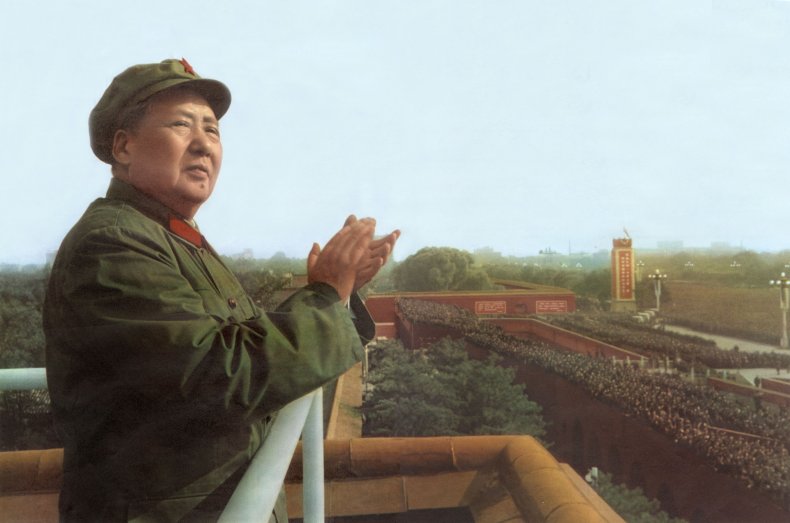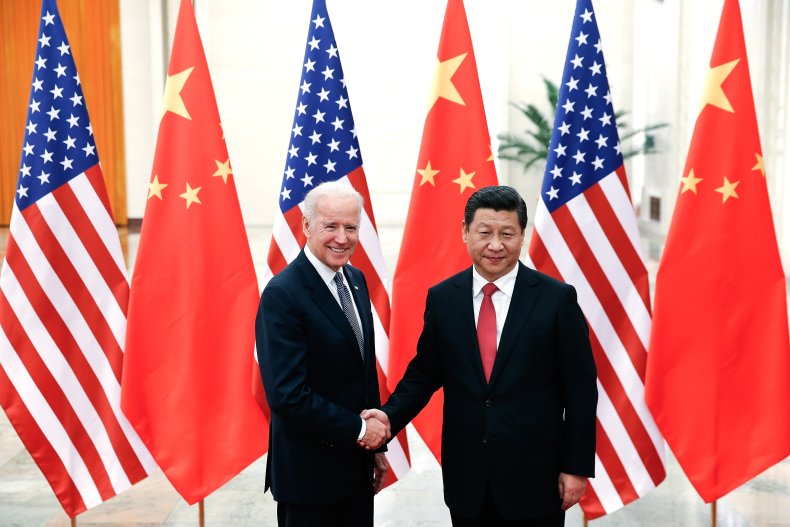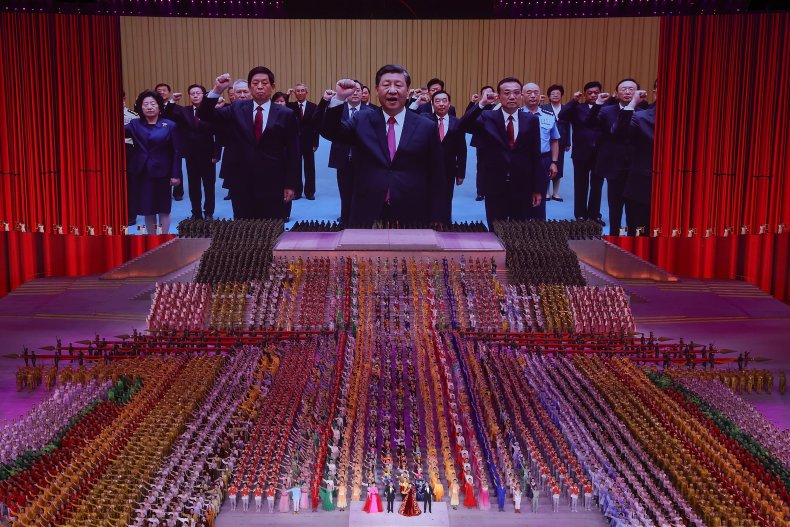JOHN FENG
The Communist Party of China (CPC) marks its 100-year anniversary on July 1 with a dogmatic leader in Xi Jinping at the helm, who China watchers say has molded himself after Mao Zedong—equally as ruthless and just as insecure.
The party's humble working-class beginnings, heavily influenced by Russia's socialist uprising in 1917, may be unrecognizable to many today. The People's Republic of China (PRC) is now a technological police state at home and viewed as a formidable nuclear power abroad.
Mao, the founding father of "New China," remains undisputedly the leader who has overseen the biggest upheaval in the country; historians estimate his revolutionary campaigns are responsible for tens of millions of unnecessary deaths. Xi wants to emulate Mao, some say, while others warn he wants China to replace the United States.
1921. The precise date of the CPC's founding is lost to time. What is certain is that its inaugural National Congress took place in Shanghai and Jiaxing from July 23 to August 2. According to official party narrative, July 1 was later selected as its official foundation day.
Its original grassroots members including Mao, a teacher, had come together two years earlier during the anti-imperialist May Fourth Movement. After the Xinhai Revolution of 1911 ended 2,000 years of empirical rule, the newly founded Republic of China (ROC) government oversaw a period of chaos that failed to institute a constitutional system. Revolutionaries like Mao emerged with an opportunity to shape the country's future.
The CPC, which was inspired by Vladimir Lenin's October Revolution of 1917, allied with the Union of Soviet Socialist Republics (USSR) with the goal of spreading its proletarian revolution in China. The party adopted a Marxist-Leninist political structure of hierarchy and centralism that persists to this day.
The Soviet Union's influence on Mao would continue well into the PRC's establishment, in the form of sweeping economic campaigns. Today, Xi still reaffirms the paramount position of the CPC in the country—it is the only party that can drive China forward.
1924. The CPC forms an alliance with the ROC's ruling Chinese Nationalist Party (KMT) to end the country's fractured warlord period. But cooperation begins to weaken following the death of KMT revolutionary leader Sun Yat-sen.
1927. Sun's successor, Chiang Kai-shek, opposes the socialist revolution and begins purging communist elements from the alliance, resulting in the August 1 Nanchang Uprising that marked the beginning of the Chinese Civil War.
1928. CPC creates a military branch, forming the Chinese Workers' and Peasants' Red Army, which would be renamed the People's Liberation Army after World War II.
1934. Outnumbered by KMT forces and on the cusp of defeat, the communist Red Army begins a series of strategic military retreats to the west and north of the country known collectively as the Long March. Among the party's most significant episodes, it began Mao's ascent to power and cemented his prestige in party history.
1937. The Chinese Civil War is temporarily suspended for the second CPC-KMT alliance, this time in preparation for the Second Sino-Japanese War. The fragile cooperation would last only four years as communist and nationalist forces split to the fight the invading Imperial Japanese Army.
1943. Having risen in the CPC's ranks, including as military leader in November 1935, Mao officially becomes party chairman on March 20, beginning a period of rule that would span four decades.
1945. World War II ends with the surrender of Japan, and the CPC's civil war continues against KMT forces.
 Chinese Communist Party leader Mao Zedong (L) and Republic of China leader Chiang Kai-shek (R) toast over a banquet during their final meeting in Chongqing, China, in 1945.GETTY IMAGES
Chinese Communist Party leader Mao Zedong (L) and Republic of China leader Chiang Kai-shek (R) toast over a banquet during their final meeting in Chongqing, China, in 1945.GETTY IMAGES1949. Communist forces gain control of mainland China and declare victory over the nationalists, proclaiming the establishment of the PRC on October 1. The ROC government would begin retreating to Taiwan two months later.
Mao declares the PRC is for the working class, guarantees gender equality, new industries and the redistribution of land. The founding father promises freedom of thought, speech, publication and assembly, as well as freedom of religious believe and demonstration, among others.
1950. China enters the Korean War in October, fighting alongside North Korea and the Soviet Union in a campaign it terms the "War to Resist America and Aid Korea." It would become the first major military conflict of the PRC era.
Also October, Tibet, a de facto independent polity since the Xinhai Revolution of 1911, is annexed by the PRC in the "Peaceful Liberation of Tibet" lasting seven months.
1952. Following a Soviet model, Mao's China adopts its first Five-Year Plan with a focus on large-scale industrialization and agricultural transformation.
1958. China's second Five-Year Plan is dubbed the Great Leap Forward —a rapid push for increased grain and steel production that would lead to the deadliest famine in human history. By 1962, anywhere between 20 and 50 million people had died from starvation, according to historical estimates.
1964. China conducts its first nuclear weapons test, detonating an atomic bomb in Xinjiang on October 16 as part of Project 596, code-named Miss Qiu. It was part of the PRC's "Two Bombs, One Satellite" initiative, making it the world's fifth nuclear power at the time.
1966. Mao's Cultural Revolution begins. He consolidates power and revives the revolutionary spirit by mobilizing the country's youth, his Red Guards, who would go on to purge China of the "Four Olds"—culture, habits, ideas and customs.
The period was marked by struggle sessions and the persecution of enemies of the working class: politicians, teachers, intellectuals, relatives and even one's own parents. Religious and historical buildings and artifacts were destroyed, with deaths said to have reached millions, while millions more were tortured.
 People’s Republic of China founding father Mao Zedong during the Cultural Revolution in Beijing on November 3, 1967.APIC/GETTY IMAGES
People’s Republic of China founding father Mao Zedong during the Cultural Revolution in Beijing on November 3, 1967.APIC/GETTY IMAGES1967. China's first hydrogen bomb detonation, code-named Test No. 6, is conducted in Xinjiang on June 17.
1970. China launches its first satellite, Dongfanghong I—known as China 1 in the West—on April 24.
1971. The PRC takes the "China" mantle from the ROC at the United Nations, following a vote on October 25.
1972. President Richard Nixon visits the PRC, beginning a rapprochement that would lead to the establishment of formal ties before the end of the decade.
 President Richard Nixon (C), Secretary of State William Rogers (R) and Chinese Vice Premier Li Xiannian (L) visit the Great Wall of China north of Beijing on February 24, 1972.AFP VIA GETTY IMAGES
President Richard Nixon (C), Secretary of State William Rogers (R) and Chinese Vice Premier Li Xiannian (L) visit the Great Wall of China north of Beijing on February 24, 1972.AFP VIA GETTY IMAGES1976. Mao dies in Beijing on September 9, aged 82. As those around him jostle for power, he is briefly succeeded by his chosen candidate, Hua Guofeng.
1978. Deng Xiaoping ousts Hua, later becoming China's paramount leader—head of the party and military. Deng spearheaded China's economic reforms and its transformation into a market economy. Scholars encapsulated Deng's foreign policy approach through his use of the Chinese idiom taoguang yanghui, which was translated into "hide your strength, bide your time."
1979. The PRC established formal diplomatic ties with the United States. Washington adopts its "one China" policy and ends official relations with the ROC government in Taiwan. Contact with Taipei is maintained with the Taiwan Relations Act of the same year.
1980. China begins the strict enforcement of the family planning program that has come to be known as the "one child policy." While often described as a misnomer—many families and ethnic minorities were allowed more than one child—the effects of the plan include a large gender imbalance that lasts to this day.
1982. China becomes the world's first country to reach a population of 1 billion.
 China's late political patriarch Deng Xiaoping applauds during a session of the National People's Congress at the Great Hall of the People in Beijing, on October 25, 1987.JOHN GIANNINI/AFP VIA GETTY IMAGES
China's late political patriarch Deng Xiaoping applauds during a session of the National People's Congress at the Great Hall of the People in Beijing, on October 25, 1987.JOHN GIANNINI/AFP VIA GETTY IMAGES1989. A student-led democracy movement breaks out across China. In Beijing, demonstrators gather on Tiananmen Square, before Deng orders the mobilization of troops to violently suppress the protests on June 4. The truth death toll of the crackdown remains unknown, while estimates range from hundreds to thousands.
Jiang Zemin would succeed Deng later the same year.
1997. Deng dies in Beijing on February 19, aged 92. His ideologies, dubbed Deng Xiaoping Theory, is drafted into the CPC constitution the same year.
The handover of Hong Kong from the United Kingdom to the PRC on July 1 establishes the city as a special administrative region under China's "one country, two systems" model.
1999. Sovereignty of Macau is transferred from Portugal to the PRC, establishing the city as China's second special administrative region on 20 December.
2001. China joins the World Trade Organization.
2002. Hu Jintao takes over from Jiang as CPC general secretary. Jiang and Hu would be regarded as the last of the Deng-era leaders.
2003. Yang Liwei becomes China's first astronaut in space, spending nearly a day in orbit onboard the Shenzhou 5 ("Devine Vessel") on October 15.
2005. The National People's Congress, China's national legislature, ratifies the Anti-Secession Law, formalizing the PRC's policy of unifying Taiwan by non-peaceful means.
2008. China hosts its first Olympic event with the Summer Games in Beijing.
2010. Following the global financial crisis, China overtakes Japan as the world's second-largest economy by GDP.
2012. Xi Jinping becomes China's paramount leader, taking the role of CPC general secretary and chairman of the Central Military Commission, before assuming the presidency in 2013.
2013. Yutu ("Jade Rabbit") becomes China's first lunar rover to land on the surface of the moon on December 14.
 Chinese President Xi Jinping (R) shake hands with then-Vice President Joe Biden (L) inside the Great Hall of the People in Beijing, China, on December 4, 2013.LINTAO ZHANG/GETTY IMAGES
Chinese President Xi Jinping (R) shake hands with then-Vice President Joe Biden (L) inside the Great Hall of the People in Beijing, China, on December 4, 2013.LINTAO ZHANG/GETTY IMAGES2015. China announces the end of its "one child policy" after 35 years, allowing couples to have two children.
2017. Xi Jinping Thought on Socialism with Chinese Characteristics for a New Era is incorporated into the CPC constitution at the 19th National Congress, making him the third leader after Mao and Deng to have ideologies entrenched in the party's doctrine.
2018. China's legislature abolishes presidential term limits, allowing Xi to remain leader for as long as he retains support.
2020. China declares victory over COVID-19 in September, after a nine-month battle to contain SARS-CoV-2.
The PRC's legislature enacts the Hong Kong national security law on June 30, effectively ending the city's guaranteed high degree of autonomy.
In November, the country says it has eliminated absolute poverty, with every citizen now living above its standard of 2,300 yuan ($355) a year.
2021. In March, The CPC declares itself the world's "largest Marxist ruling party," with 91.91 million card-carrying members.
China launches Tianhe ("Heavenly Harmony"), the core module of its space station Tiangong ("Heavenly Palace"), into low Earth orbit on April 29. The first taikonauts to occupy Tianhe dock on June 17.
Chinese Mars exploration rover Zhurong lands on the red planet on May 14, making the PRC only the second country to achieve the feat.
July 1—Xi oversees national celebrations as China marks the 100th anniversary of the founding of the Communist Party of China.
 A large screen showing communist leader and Chinese President Xi Jinping during an art performance celebrating the 100th anniversary of the founding of the Communist Party of China on June 28, 2021, in Beijing, China.LINTAO ZHANG/GETTY IMAGES)
A large screen showing communist leader and Chinese President Xi Jinping during an art performance celebrating the 100th anniversary of the founding of the Communist Party of China on June 28, 2021, in Beijing, China.LINTAO ZHANG/GETTY IMAGES)
No comments:
Post a Comment